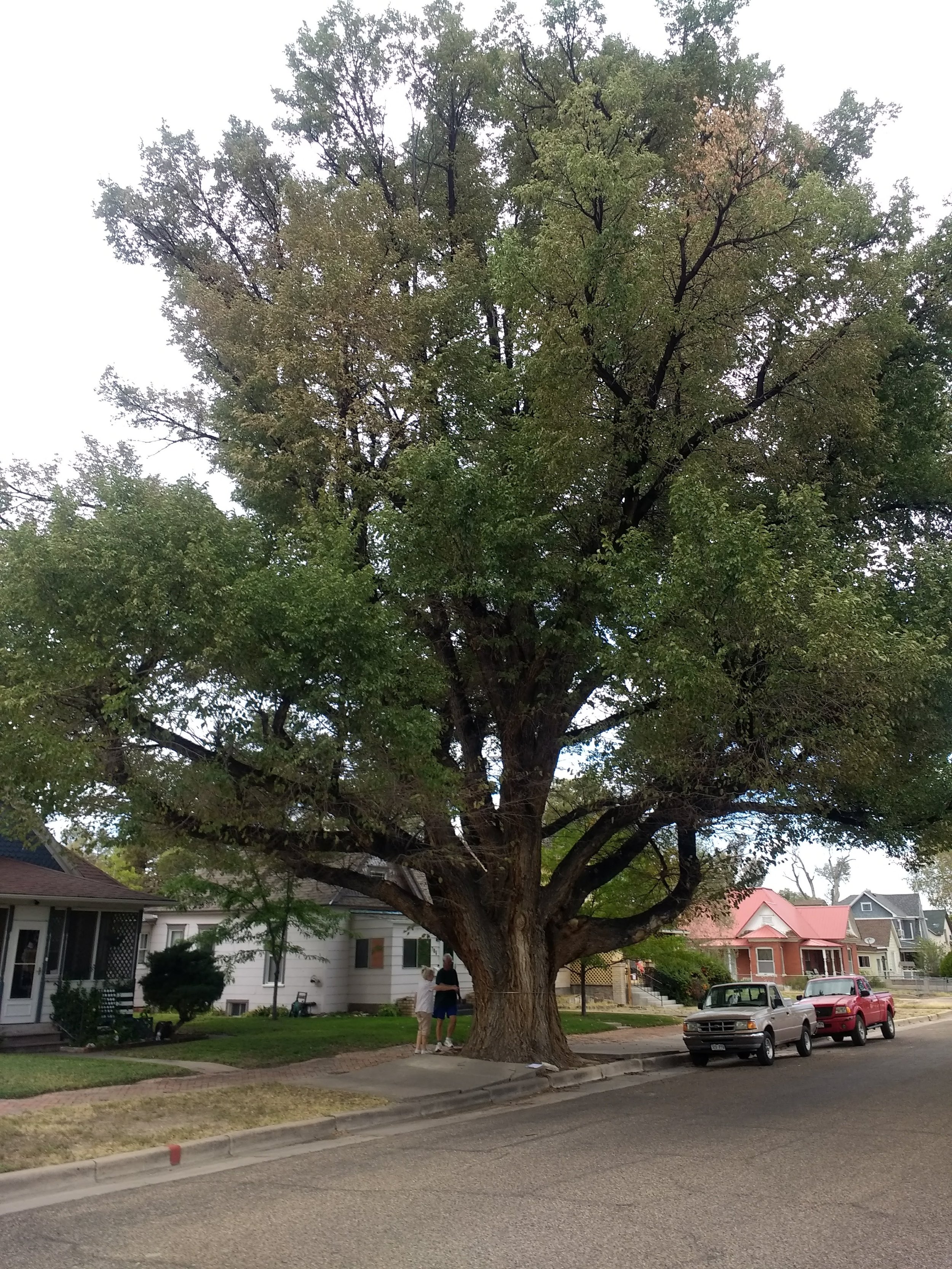English elm (Ulmus procera)
Second place champion (tied) English elm in La Junta.
Species info:
Leaves: Alternate, simple, broadly elliptical, 2–3¾ inches long and 1¾–2 inches wide. Abruptly pointed tip, strongly unequal leaf base, and doubly serrated margins. Upper surface dark green and rough; underside paler with soft hairs.
Leaf Surface: Coarse and sandpapery above; pubescent beneath.
Bark: Dark gray and deeply furrowed into rectangular plates; provides a rugged, interlaced texture on mature trunks. Young twigs are brown, slender, and densely hairy; may develop narrow corky wings with age.
Flowers: Small (⅛ inch), dark red clusters along twigs in early spring before leaves emerge.
Fruit: Flat, rounded samaras about ½ inch long, greenish and hairless, each with one seed near a notched tip. Ripens and disperses in spring.
Botanical: Ulmus procera
Family: Ulmaceae
Mature Height: 70–100 feet
Canopy Spread: 60–90 feet
Foliage Type: Deciduous
Tree Shape: Oval
Growth Rate: Moderate to fast
Flowers: Inconspicuous
Fruit: None
Fall Color: Yellow
Water Use: Moderate; prefers consistent soil moisture
Hardiness: Zones 5–8 (tolerant of a wide range of temperatures and soils)
Soil Preference: Moist, fertile, well-drained soils preferred, though adaptable to a variety of conditions
Wildlife Value: Provides nesting and shade habitat; seeds and foliage attract birds and insects
Pests/Pathogens: Susceptible to Dutch elm disease (DED), elm leaf beetles may defoliate trees, and elm bark beetle
Planting Recommendations:
Information Sources:


